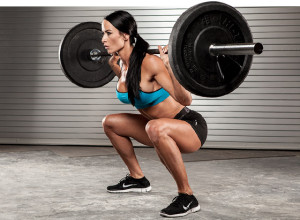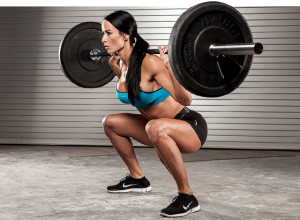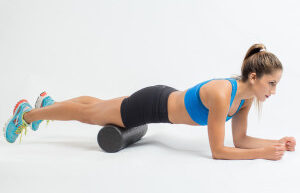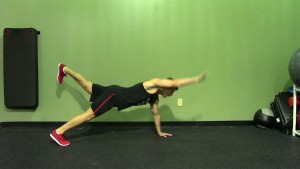
After over 15 years in the fitness industry, there is one type of question I get all the time that shows that many people are missing the big picture regarding the benefits of strength training. This popular question usually goes something like this:
“What’s the best exercise I can do to work my _______ (insert your muscle of choice – abs, quads, biceps, triceps, etc)?”
It doesn’t matter which muscle someone is asking about, they always seem to be asking how to ‘isolate’ it.
Another sign that you may be performing too many isolation exercises is if you live and die by split routines. Split routines are when your exercise regimen is divided by biceps day, quad day, triceps day, chest day, etc.
The first thing I try to teach people is that the body does not work well in muscle isolation. Rather, it works better in movements along a kinetic chain; that is, large portions of the body assist other portions of the body in completing a complex movement.
Movements that are used in our day to day lives or athletic events. In fact, there really is no such thing as true muscle isolation. There is almost always a nearby muscle group that will assist in some way with whatever movement you are doing. However, this article compares attempting to ‘isolate’ body parts via single-joint exercises to the much more effective strategy of performing multi-joint, complex movements.
When you attempt to ‘isolate’ muscles by performing single-joint exercises, you are actually creating a body that is non-functional and will be more prone to injury. Essentially, you are creating a body that is a compilation of body parts, instead of a powerful, functional unit that works together.
Now if you really want to end up hobbling around in a body bandaged up with joint problems, tendonitis, and excess body fat, then by all means, continue trying to ‘isolate’ body parts. On the other hand, if you would rather have a lean, muscular, injury-free, functional body that works as a complete powerful unit to perform complex movements (in athletics or even everyday tasks), then you need to shift your focus away from muscle isolation.
Believe me, focusing on how well your body functions will give you the side effect of a body that looks even better than it would have if you focused on muscle isolation. For example, take a look at the physiques of any NFL running backs, collegiate volleyball players, or even world class sprinters.
Trust me when I say that they pretty much NEVER train for muscle isolation (their strength coaches wouldn’t be crazy enough to let them), yet they are absolutely ripped to shreds!
Their routines consist of mostly hiit workouts and total body strength workouts.
Another benefit to moving away from the ‘muscle isolation’ mindset in weight training to a more ‘complex movement’ mindset is that you will find it much easier to lose body fat. The reason is that by focusing more on multi-joint complex movements as opposed to single-joint muscle isolation lifts, you not only burn a lot more calories during each workout, but you also increase your metabolic rate, and stimulate production of more fat burning and muscle building hormones such as growth hormone and testosterone.
Let’s look at an example. The machine leg extension is a single joint exercise that works mainly the quadriceps, can potentially cause knee joint instability in the long run, and doesn’t even burn that many calories.
On the other hand, exercises like squats, lunges, step-ups, and deadlifts are all multi-joint complex movements that work hundreds of muscles in the body (including the quadriceps) as a functional unit, create more stable and strong joints in the long run (when done properly), and also burn massive quantities of calories compared to the single-joint exercises.
Now although I do feel that multi-joint exercises should comprise the majority of your weight training workouts, I also think that there can be some benefits with just minor inclusions of single-joint exercises for variety, etc. I choose to build my training programs with about 90-95% multi-joint exercises and about 5-10% single-joint exercises at most.






Add comment